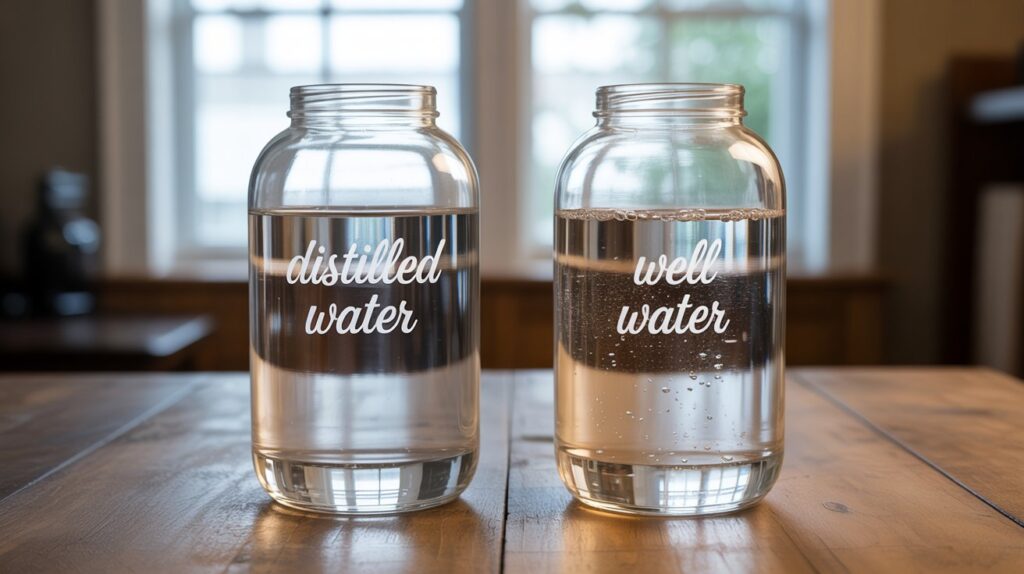Have you ever wondered what it takes to ensure the water you drink every day is safe? If you rely on a domestic well for your household water, you might be carrying an unseen burden. While many of us take clean drinking water for granted, well owners are responsible for much more than just turning on the tap.
Introduction to Domestic Well Usage
Over 43 million people in the United States rely on private wells for their drinking water. That’s a significant portion of the population—more than the entire population of California! For these individuals, having a private well means more than just a water supply; it comes with a lot of responsibility and, sometimes, a fair amount of worry.
Why Do People Use Domestic Wells?
There are various reasons why people might opt for a domestic well. Maybe you live in a rural area where a municipal water supply isn’t available, or perhaps you prefer the taste and quality of well water. Sometimes, it’s a matter of maintaining self-sufficiency. Regardless of the reason, domestic wells come with their own set of challenges and responsibilities.
The Scope of Domestic Well Usage
With such a huge number of people relying on well water, the importance of ensuring its safety cannot be overstated. Unlike municipal water supplies, which are regulated and routinely tested, the responsibility for maintaining the quality of well water falls squarely on the shoulders of the homeowner.
Regulation: A Double-Edged Sword
One might think that water, a basic human necessity, would be strictly regulated to ensure safety across the board. However, that assumption couldn’t be further from the truth when it comes to domestic wells.
The Absence of Regulation
Domestic wells aren’t regulated by the Federal Safe Drinking Water Act (SDWA). This significant piece of legislation lays down the law for municipal water supplies but leaves private wells out in the cold. Most state laws also opt-out from regulating domestic wells, placing the onus of maintenance and testing squarely on homeowners.
Imagine being responsible for checking the engine of your vehicle without any formal guidelines or assistance—the complexity and risk would be much higher. That’s the reality for domestic well owners.
The Federal Safe Drinking Water Act (SDWA)
The SDWA is designed to protect public health by regulating the nation’s public drinking water supply. The Act authorizes the Environmental Protection Agency (EPA) to set national health-based standards for drinking water to protect against both naturally-occurring and man-made contaminants. However, private wells fall outside the purview of the SDWA, essentially making well owners their own water safety officers.
Water Quality Concerns: The Unseen Threats
You might be wondering why there’s so much fuss about water quality when earth seems to be covered in it. The issue is that not all water is safe to drink—contaminants are more common than you might think, particularly in well water.
Common Contaminants in Well Water
Contaminants like bacteria, nitrate, arsenic, radon, lead, and organic compounds can be found in well water, posing considerable risks to health. These contaminants can enter well water through various means like agricultural runoff, naturally occurring minerals, or industrial discharges.
Here’s a breakdown of some common contaminants and their sources:
| Contaminant | Common Sources |
|---|---|
| Bacteria | Septic systems, animal agriculture |
| Nitrate | Fertilizers, wastewater |
| Arsenic | Erosion of natural deposits, industrial processes |
| Radon | Decay of uranium in the soil |
| Lead | Corroded plumbing materials |
| Organic Compounds | Industrial discharges, agricultural runoff |
Health Risks from Contaminated Well Water
The health risks posed by these contaminants can be severe. For instance, high levels of nitrate can cause methemoglobinemia, or “blue baby syndrome,” in infants. Arsenic exposure has been linked to various forms of cancer. Bacterial contamination can lead to gastrointestinal illnesses. The presence of these contaminants means well owners must remain vigilant and proactive about water quality.
Study Findings on Well Contaminants
In a study examining 2,100 wells, it was found that 20% had contaminants above safe levels, and a staggering 60% contained pesticides and solvents, though these were rarely at harmful levels. This illustrates the hidden peril lurking in seemingly innocuous well water.
The Importance of Regular Water Testing
Given the risks associated with well water, regular testing becomes a non-negotiable aspect of responsible well ownership. However, testing isn’t a routine practice for many well owners, leading to unawareness and, consequently, untreated contamination.
Barriers to Regular Testing
Several factors can dissuade well owners from conducting regular tests: cost, lack of awareness, and the inconvenience of the process. Unlike municipal water, which is systematically treated and tested, well owners must initiate and bear the expense of testing on their own.
What to Test For
Water testing should cover a broad spectrum of contaminants. At a minimum, well owners should test for:
- Bacteria (particularly coliform bacteria)
- Nitrates
- pH levels
- Total dissolved solids (TDS)
- Lead
- Pesticides and organic compounds
Frequency of Testing
As a rule of thumb, you should test your well water at least once a year. However, more frequent testing is recommended if there are changes in your water’s taste, odor, or appearance, or if there’s been any environmental incidents near your well, such as flooding or chemical spills.
Advancements in Water Quality Modeling
Modern technology has facilitated significant advancements in predicting the presence and concentration of contaminants in groundwater sources like glacial aquifers.
USGS 3-D Models
The United States Geological Survey (USGS) has developed 3-D models to predict the concentrations of arsenic and manganese in glacial aquifers, which are critical groundwater sources. These models can be indispensable for well owners, helping them understand their geographical risks and the necessity of testing for specific contaminants.
Using Models for Risk Prediction
Such predictive models help in identifying areas that are at a higher risk of contamination. This knowledge can guide well owners to preemptively test and treat their water, thereby avoiding potential health risks. Leveraging these models is a step towards more informed and proactive well ownership.
The Case of Lithium
Another concerning finding comes from a recent study on lithium levels in water supplies. Lithium is a naturally occurring element, but at high concentrations, it’s a potential health concern.
Lithium Study Findings
The study revealed that about 45% of public-supply wells and 37% of domestic wells have lithium levels that may pose health concerns. Lithium exposure is connected to multiple health issues, including neurological effects.
Implications for Well Owners
If you own a domestic well, understanding the potential risks of lithium is crucial. Regular testing for lithium, especially in areas flagged by studies, can provide peace of mind and ensure the long-term health of your household.
Contaminant Mixtures: The Potent Combination
One of the less-discussed but equally critical issues in well water quality is the confluence of multiple contaminants. While a single contaminant can be harmful, the combination of several can significantly amplify the risks involved.
Understanding Combined Toxicity
When multiple contaminants are present, they could potentially interact with each other, increasing the overall toxicity. This “cocktail effect” makes it even more imperative to conduct comprehensive water testing and treatment.
Strategies to Address Mixed Contaminants
Combating mixed contaminants involves a multi-faceted approach:
- Regular Testing: Ensure comprehensive testing covers a wide range of potential contaminants.
- Advanced Filtration Systems: Consider installing multi-stage filtration systems capable of removing various contaminants simultaneously.
- Expert Consultation: Engage experts to interpret water test results and recommend suitable treatment solutions.
Types of Domestic Wells
Understanding the kind of well you have is another crucial aspect of well ownership. Different types of wells have different construction methods, depths, and susceptibilities to contamination.
Hand-Dug Wells
These are typically shallow wells, dug by hand using simple tools. While they are less expensive to construct, they are more susceptible to contamination due to their shallowness.
Driven Wells
These wells are constructed by driving a small-diameter pipe into shallow water-bearing sand or gravel. They are more protected compared to hand-dug wells but still risk contamination from surface activities.
Drilled Wells
Drilled wells are typically deeper and offer better protection against surface contaminants. These wells are drilled using complex machinery and are lined with a casing to maintain the integrity of the well structure.
| Well Type | Average Depth | Contamination Risk | Cost |
|---|---|---|---|
| Hand-Dug | 10-30 feet | High | Low |
| Driven | 30-50 feet | Moderate | Medium |
| Drilled | Over 50 feet | Low | High |
Each type of well has its pros and cons, and knowing the specifics can help guide your maintenance and testing efforts.
Geographical Insights from USGS Maps
The USGS provides maps indicating areas where private wells are commonly used. These maps are invaluable tools for well owners.
How USGS Maps Help
By identifying high-well usage areas, the USGS maps allow for targeted testing and studies, providing well owners with specific localized data. This makes it easier to anticipate potential contaminants common in those areas.
Utilizing Geographic Information
If your area is mapped as a high-well-usage region, there might be additional resources, community initiatives, or local guidelines to help you manage your well. Staying informed about your geographic specifics can give you a significant advantage in maintaining water quality.
The Role of Public-Supply Wells
While our primary focus is on domestic wells, it’s worth noting how public-supply wells differ and what we might learn from them.
Regulation and Safety Protocols
Public-supply wells are rigorously regulated and systematically tested, providing a benchmark for what ideal water monitoring might look like. Understanding these protocols can offer insights into best practices for maintaining private wells.
Community Resources
Public-supply wells also typically have community resources and professional oversight, which can sometimes be a source of advice for private well owners. Engaging with local water authorities can provide helpful guidance and resources for maintaining your well.
Taking Responsibility: What Well Owners Should Do
Owning a domestic well means taking control of your water quality and safety. Here are some actionable steps to ensure your well water remains safe and clean.
Regular Maintenance
Inspect your well regularly for any signs of damage or contamination. Ensure the well cap is secure and the area around it is clean and free from potential contaminants.
Routine Testing
Establish a schedule for regular water testing. Annual tests should be a minimum, with additional tests if there are any changes in taste, smell, or appearance of the water.
Install Proper Filtration
Depending on your test results, install the appropriate filtration systems. Activated carbon filters, reverse osmosis systems, and UV purifiers are some options that can address a range of contaminants.
Stay Informed
Keep yourself updated on local water quality issues and advancements in well technology and safety. Participate in community discussions and utilize resources provided by geological surveys and health departments.
Conclusion: The Unseen Burden and the Path Forward
Relying on a domestic well certainly comes with its unseen burdens, from being responsible for regular testing to staying vigilant about potential contaminants. However, with awareness and proactive steps, you can ensure your water is as safe as any municipal supply.
Whether it’s utilizing modern technology like USGS 3-D models, understanding the specific risks in your geographic area, or adhering to stringent testing and maintenance schedules, the onus of responsibility, while significant, can be effectively managed.
So next time you turn on your tap, remember the pivotal role you play in ensuring the water flowing out is pure and safe. After all, when it comes to water quality, the best defense is a well-informed and proactive offense.


